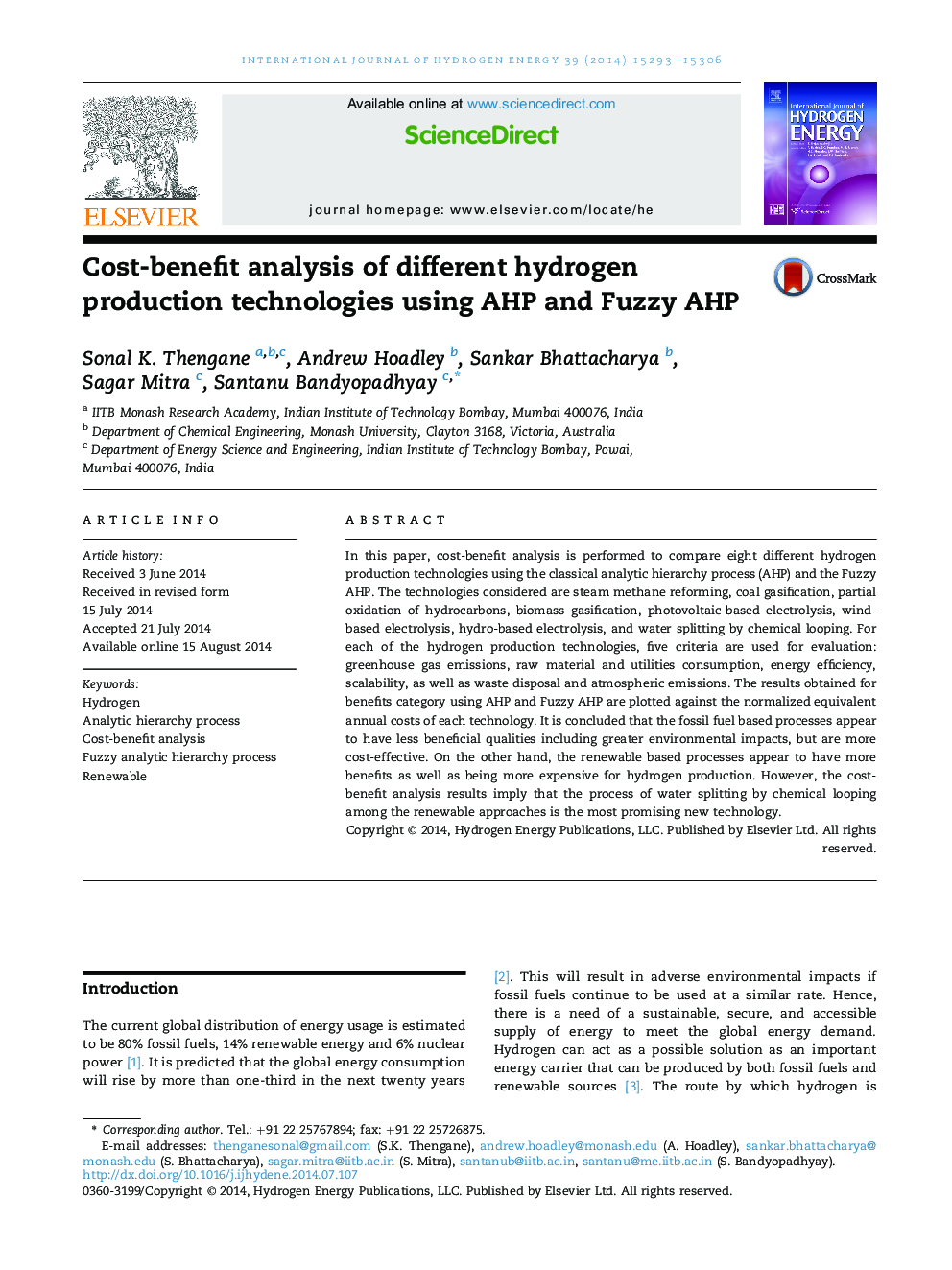| Article ID | Journal | Published Year | Pages | File Type |
|---|---|---|---|---|
| 1272366 | International Journal of Hydrogen Energy | 2014 | 14 Pages |
•Cost-benefit analysis is performed to compare 8 hydrogen production technologies.•Benefits for various technologies are assessed for five different criteria.•Different costs are combined as normalized equivalent annual cost for comparison.•Benefits are evaluated using three different AHP methodologies.•Water splitting by chemical looping using renewable energy is the most promising.
In this paper, cost-benefit analysis is performed to compare eight different hydrogen production technologies using the classical analytic hierarchy process (AHP) and the Fuzzy AHP. The technologies considered are steam methane reforming, coal gasification, partial oxidation of hydrocarbons, biomass gasification, photovoltaic-based electrolysis, wind-based electrolysis, hydro-based electrolysis, and water splitting by chemical looping. For each of the hydrogen production technologies, five criteria are used for evaluation: greenhouse gas emissions, raw material and utilities consumption, energy efficiency, scalability, as well as waste disposal and atmospheric emissions. The results obtained for benefits category using AHP and Fuzzy AHP are plotted against the normalized equivalent annual costs of each technology. It is concluded that the fossil fuel based processes appear to have less beneficial qualities including greater environmental impacts, but are more cost-effective. On the other hand, the renewable based processes appear to have more benefits as well as being more expensive for hydrogen production. However, the cost-benefit analysis results imply that the process of water splitting by chemical looping among the renewable approaches is the most promising new technology.
